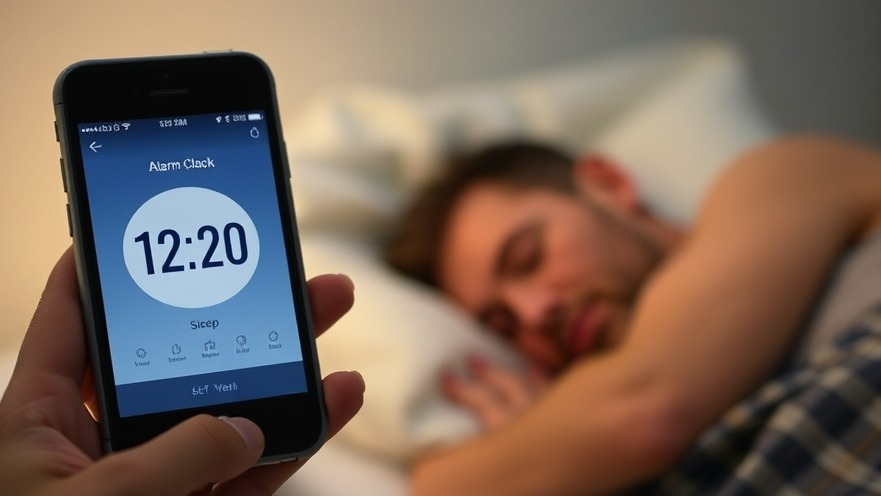
Unlocking Sleep: How to Harness Technology for Better Rest
For many digital nomads, the line between work and sleep can blur, especially when the tools we rely on for productivity also interfere with our rest. With the right strategies, it's possible to transform technology into a supporting ally in reclaiming a good night's sleep. Here’s how I transitioned from a late-night scrolling habit to waking up refreshed, thanks to tech adjustments that made a world of difference.
Why Boundaries Matter in the Digital Age
In a world bombarded by notifications and the allure of endless content, setting boundaries is crucial for better sleep. As we find ourselves increasingly connected via our devices, it's easy to allow work or social media to creep into our downtime. For me, learning to say no to devices before bedtime was a game changer. This shift improved not only my mood but also my productivity the following day. Establishing a routine that clearly delineates work and relaxation times is invaluable for every digital nomad.
The Magic of a Sunrise Alarm Clock
Switching from a smartphone to a dedicated gadget like a sunrise alarm clock has had a profound impact on my mornings. These clocks mimic natural sunlight, gradually increasing brightness to gently wake us up. This approach is especially beneficial in regions where the sun rises late during winter months. After trying this technique, I found it not only easier to wake up but also to start my day with a more positive attitude. In a bustling digital landscape, optimizing our wake-up process with tools that boost alertness can be transformative.
Utilizing Sleep Mode Effectively
Another incredible feature readily available for digital nomads is Sleep Mode on smartphones. By configuring my iPhone’s Sleep Mode, I can shut out notifications and create an environment that’s conducive to rest. By scheduling my sleeping hours and enabling a wind-down period, I’ve fostered a healthy nighttime routine. Not only does my focus increase during work hours, but the quality of my sleep has also vastly improved. It’s imperative to learn how to leverage these functionalities effectively.
Setting Content Consumption Boundaries
As a digital nomad, you should be mindful of your content consumption habits. Swiping through social media before bed often leads to a restless night due to induced stress or anxiety. To combat this, I've instituted strict boundaries around content. By designating specific ‘no-touch’ zones on my phone and curating my media consumption, I’ve managed to fortify my well-being while keeping distractions at bay.
Light Matters: Create a Calming Setting
The light in your environment certainly influences your mental state. I recommend investing in softer lighting options or utilizing smart bulbs that can gradually dim as bedtime approaches. A calm atmosphere prepares your mind for sleep. Moreover, implementing practices such as disabling blue light from screens in the evening increases the likelihood of feeling relaxed and ready for a restful night.
Anticipating Future Trends in Sleep Tech
With advances in sleep technology, it’s exciting to consider how future innovations might further enhance our sleep habits. From smart mattresses that adjust to our sleep positions to wearable devices monitoring our sleep cycles, these developments strive to dive deeper into personalized sleep health. By staying updated and open to new solutions, we can continue to harness technology as a potent tool for achieving well-deserved rest.
Final Thoughts
In a world where sleep seems to take a backseat to our digital lifestyles, it’s essential to seize control. By leveraging technology thoughtfully rather than being consumed by it, we can cultivate habits that foster better rest. As digital nomads, your sleep matters tremendously—reclaim it through intentional choices, as I have, and wake up ready to seize the day!
 Add Row
Add Row  Add
Add 




Write A Comment